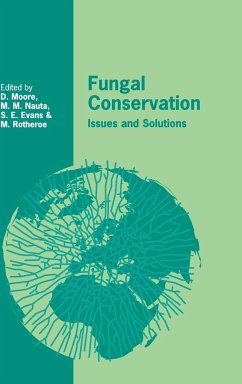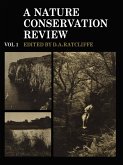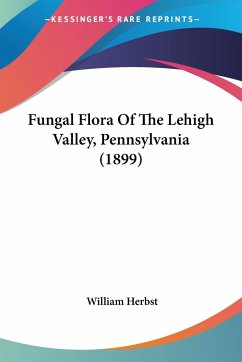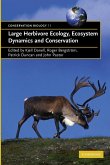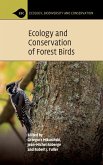Threats to fungi and fungal diversity throughout the world have prompted debates about whether and how fungi can be conserved. Should it be the site, or the habitat, or the host that is conserved? All of these issues are addressed in this volume, but coverage goes beyond mere debate with constructive guidance for management of nature in ways beneficial to fungi. Different parts of the world experience different problems and a range of examples are presented; from Finland in the North to Kenya in the South, and from Washington State, USA in the West to Fujian Province, China in the East. Equally wide-ranging solutions, are put forward, from voluntary agreements, through land management techniques, to primary legislation. Taken together, these provide useful suggestions about how fungi can be included in conservation projects in a range of circumstances.
Table of contents:
Preface; 1. Fungal conservation issues: recognising the problem, finding solutions D. Moore, M. Nauta, S. Evans and M. Rotheroe; 2. Current trends and perspectives for the global conservation of fungi R. Courtecuisse; 3. Conservation and management of forest fungi in the Pacific Northwestern United States: an integrated ecosystem approach R. Molina, D. Pilz, J. Smith, S. Dunham, C. Dreisbach, T. O'Dell and M. Castellano; 4. The future of fungi in Europe: threats, conservation and management E. Arnolds; 5. Fungi as indicators of primeval and old growth forests deserving protection E. Parmasto; 6. Recognising and managing mycologically valuable sites in The Netherlands L. Jalink and M. Nauta; 7. Threats to hypogeous fungi M. Larynowicz; 8. Wild mushrooms and rural economics D. Arora; 9. Threats to biodiversity caused by traditional mushroom cultivation technology in China S. Chiu and D. Moore; 10. A preliminary survey of waxcap grassland indicator species in South Wales M. Rotheroe; 11. Grasslands in the coastal dunes: the effect of nature management on the mycota M. Nauta and L. Jalink; 12. The conservation of fungi on reserves managed by the Royal Society for the Protection of Birds M. Allison; 13. Strategies for conservation of fungi in the Madonie Park, North Sicily G. Venturella and S. La Rocca; 14. Fungal conservation in the Ukraine D. Minter; 15. The threatened and near-threatened Aphyllophorales of Finland H. Kotiranta; 16. Fungal conservation in Cuba D. Minter; 17. Microfungus diversity and the conservation agenda in Kenya F. Cannon, R. Mibey and G. Siboe; 18. Fungi and the UK Biodiversity Action Plan: the process explained L. Fleming; 19. The Scottish Wild Mushroom Forum A. Dyke; 20. The contribution of national mycological societies: establishing a British Mycological Society policy D. Moore; 21. The contribution of national mycological societies: the Dutch Mycological Society and its Committee for Fungi and Nature Conservation M. Nauta and L. Jalink; 22. Fungal conservation in the 21st century: optimism and pessimism for the future D. Moore, M. Nauta, S. Evans and M. Rotheroe; Index.
The threat to fungal diversity throughout the world prompts debate about whether and how fungi can be conserved. This book considers the debates, and goes on to provide practical guidance for management of nature in ways beneficial to fungi.
Considers the issues involved in fungal conservation and provides practical guidance for management of nature in ways beneficial to fungi.
Hinweis: Dieser Artikel kann nur an eine deutsche Lieferadresse ausgeliefert werden.
Table of contents:
Preface; 1. Fungal conservation issues: recognising the problem, finding solutions D. Moore, M. Nauta, S. Evans and M. Rotheroe; 2. Current trends and perspectives for the global conservation of fungi R. Courtecuisse; 3. Conservation and management of forest fungi in the Pacific Northwestern United States: an integrated ecosystem approach R. Molina, D. Pilz, J. Smith, S. Dunham, C. Dreisbach, T. O'Dell and M. Castellano; 4. The future of fungi in Europe: threats, conservation and management E. Arnolds; 5. Fungi as indicators of primeval and old growth forests deserving protection E. Parmasto; 6. Recognising and managing mycologically valuable sites in The Netherlands L. Jalink and M. Nauta; 7. Threats to hypogeous fungi M. Larynowicz; 8. Wild mushrooms and rural economics D. Arora; 9. Threats to biodiversity caused by traditional mushroom cultivation technology in China S. Chiu and D. Moore; 10. A preliminary survey of waxcap grassland indicator species in South Wales M. Rotheroe; 11. Grasslands in the coastal dunes: the effect of nature management on the mycota M. Nauta and L. Jalink; 12. The conservation of fungi on reserves managed by the Royal Society for the Protection of Birds M. Allison; 13. Strategies for conservation of fungi in the Madonie Park, North Sicily G. Venturella and S. La Rocca; 14. Fungal conservation in the Ukraine D. Minter; 15. The threatened and near-threatened Aphyllophorales of Finland H. Kotiranta; 16. Fungal conservation in Cuba D. Minter; 17. Microfungus diversity and the conservation agenda in Kenya F. Cannon, R. Mibey and G. Siboe; 18. Fungi and the UK Biodiversity Action Plan: the process explained L. Fleming; 19. The Scottish Wild Mushroom Forum A. Dyke; 20. The contribution of national mycological societies: establishing a British Mycological Society policy D. Moore; 21. The contribution of national mycological societies: the Dutch Mycological Society and its Committee for Fungi and Nature Conservation M. Nauta and L. Jalink; 22. Fungal conservation in the 21st century: optimism and pessimism for the future D. Moore, M. Nauta, S. Evans and M. Rotheroe; Index.
The threat to fungal diversity throughout the world prompts debate about whether and how fungi can be conserved. This book considers the debates, and goes on to provide practical guidance for management of nature in ways beneficial to fungi.
Considers the issues involved in fungal conservation and provides practical guidance for management of nature in ways beneficial to fungi.
Hinweis: Dieser Artikel kann nur an eine deutsche Lieferadresse ausgeliefert werden.

